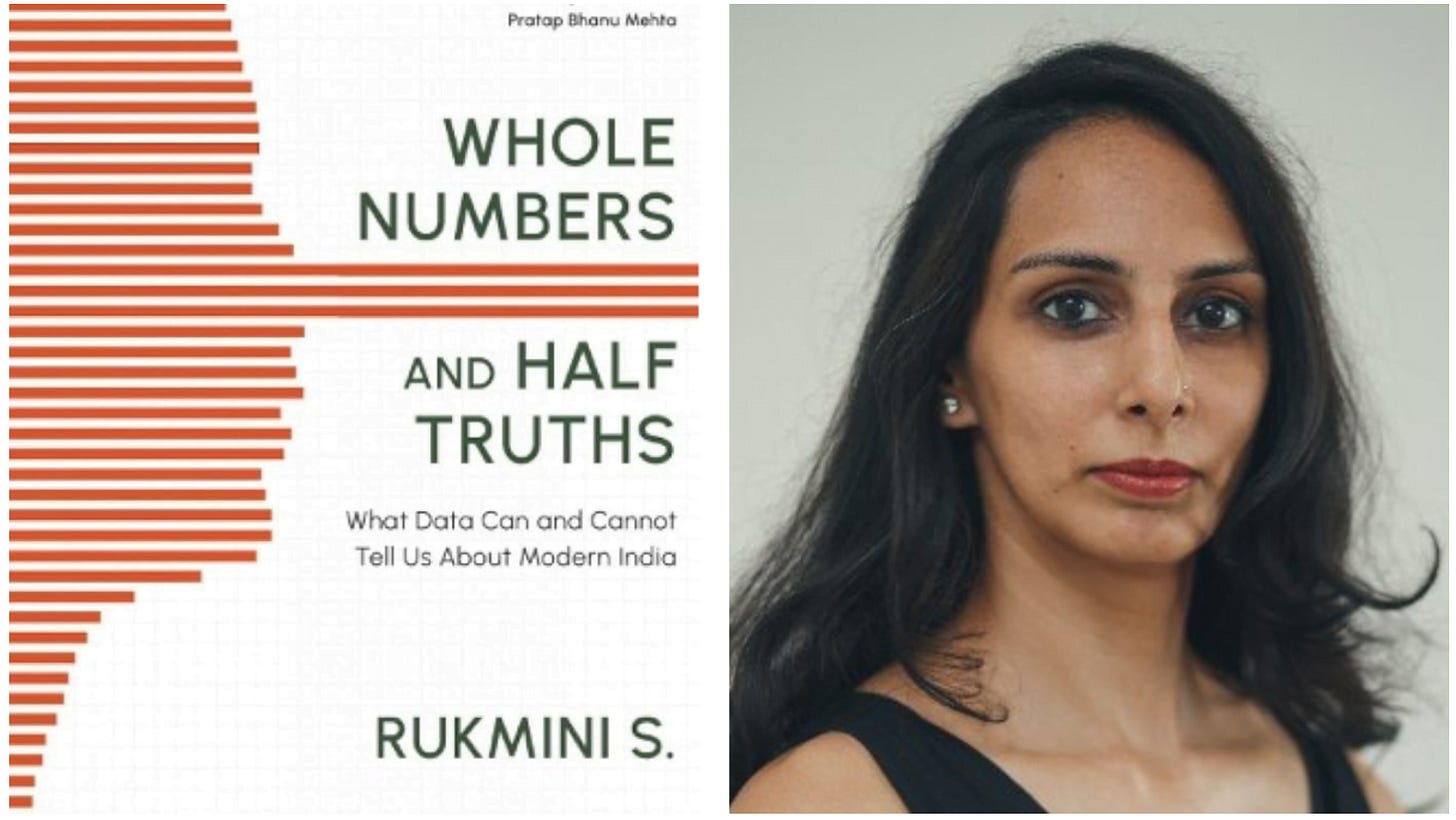Rukmini S is an independent data journalist based in Chennai, India. She is the author of Whole Numbers and Half Truths and publishes Data for India, crafting data-driven stories.
Whole Numbers and Half Truths is an attempt to make sense of Indian life through the substrate of data. It explores private and public dimensions of how India thinks, acts, prays, and even loves—drawing from reliable sources like Lokniti-CSDS, Pew Research, and the Centre for Monitoring the Indian Economy (CMIE) among others.
Belief in God , Marriage & Love
It’s claimed 97% of Indians believe in God, with Buddhists as the notable exception. Buddhist traditions do not promote belief in a creator god, focusing instead on ethical conduct and discipline to attain nirvana—the cessation of suffering. While rituals exist in many Buddhist schools, they are not central to liberation. Religion remains important to Indians: 60% say they pray daily. Education level doesn’t affect religious practice. Indians are largely indifferent to, and tolerant of, the religious practices of others.
The book examines patterns in vegetarian vs. non-vegetarian food consumption, and how food habits intersect with upward mobility. It shows that modern India remains largely conservative—more orthodox in religious practice. It explores dietary choices, alcohol consumption, and the types of alcohol preferred. Foods like poultry, eggs, fish, fruits, and legumes—often more expensive—reveal distinct consumption patterns across income groups.
Indians overwhelmingly marry within their caste. The average age gap between husband and wife is around five years.The poorest 40% of women tend to marry before 18. Richer, better-educated women marry later. Over 90% of marriages in India are arranged by families. Love marriages are more common among richer, better-educated people, and among Christians and Muslims.
Work, Money & Leisure
The book explores how Indians earn, how much they earn, and how they spend on leisure. Enjoyment varies by caste, class, gender, and geography. Most women still aren’t paid for household labor. Nearly 40% of Scheduled Castes work as wage laborers—mostly in casual roles.
Riding motorbikes and singing chants are favourite leisure activities. Rich and upper-caste groups spend more time on religious practice and have more access to media. Inter-religious marriages are seen as acts of rebellion.
Fewer than 20% of women have their names on house papers; half have a bank account in their name; only 10% can make primary purchase decisions. For women working all day, talking to someone is the most meaningful leisure—because no one listens to them.
Human Rights, Media & Voting Preferences
There are inferences, media exposure benefits the ruling BJP more than Congress, which performs better among those with low media access. Half of Indians vote based on caste. Many are open to strong leaders and tolerate media bias, discrimination, and segregation based on caste and religion.
Human rights and freedom of expression aren’t widely prioritized. From fans to cult followers, the idea of a fair judiciary or honest elections ranks low. Yet 70% still trust their state government. Media continues to reinforce bias. Among urban graduates and postgraduates, 66.6% lean toward ethnic nationalism and majoritarian views. Ghettoisation of minorities—especially Muslims—is rampant, from physical segregation to anti-Muslim rhetoric in mass media.
Voter turnout is around two-thirds, with more women voting than ever. The surge in female voters reflects growing participation. Ironically, the poor vote because it’s their right, while the non-poor vote for material benefits or out of a sense of duty.
Indians are on the move—especially from states like UP, Bihar, and Bengal. Migrants often can’t vote. In 2015, Janagraha a Bangalore based trust working in the areas of urban infrastructure and citizenship reported that 11% of voter addresses couldn’t be found, 21% had moved, and nearly 50% couldn’t find their names on Delhi’s voter list. Pollsters and journalists often frame voting as driven by caste, religion, leaders, or development—but the reality is more nuanced. After the CAA protests, Muslims voted for AAP (not Congress), even though Congress supported the agitation—because AAP was more likely to defeat BJP. Notably, BJP has no elected Muslim representative.
First published in 2021, the datasets referred in some cases may appear dated, however the book is an interesting read for those who are curious about modern India.



